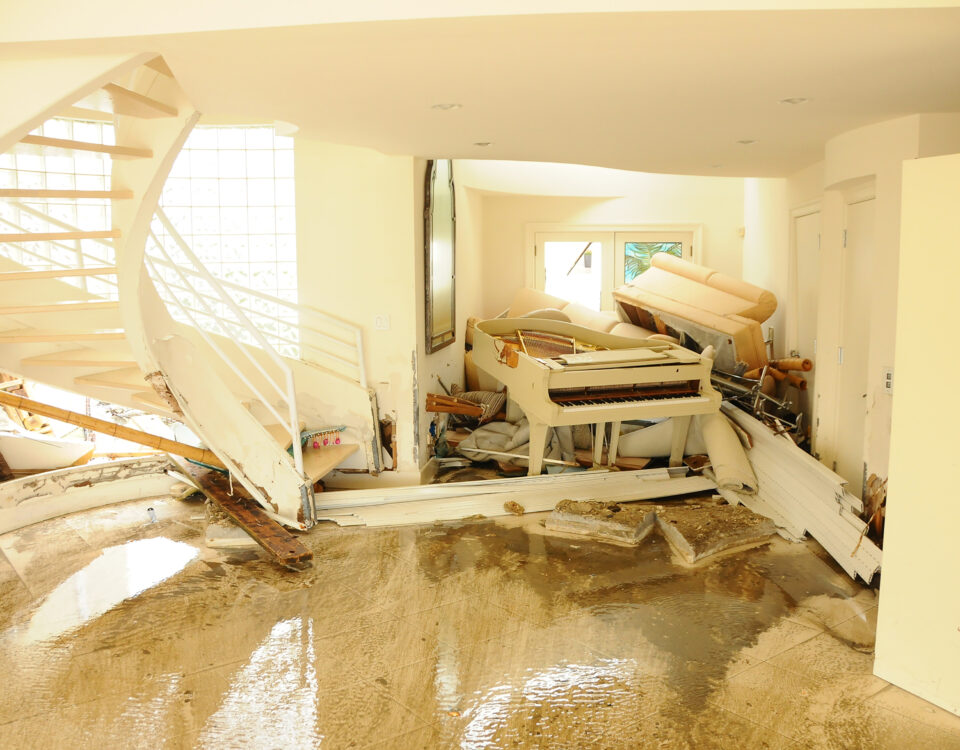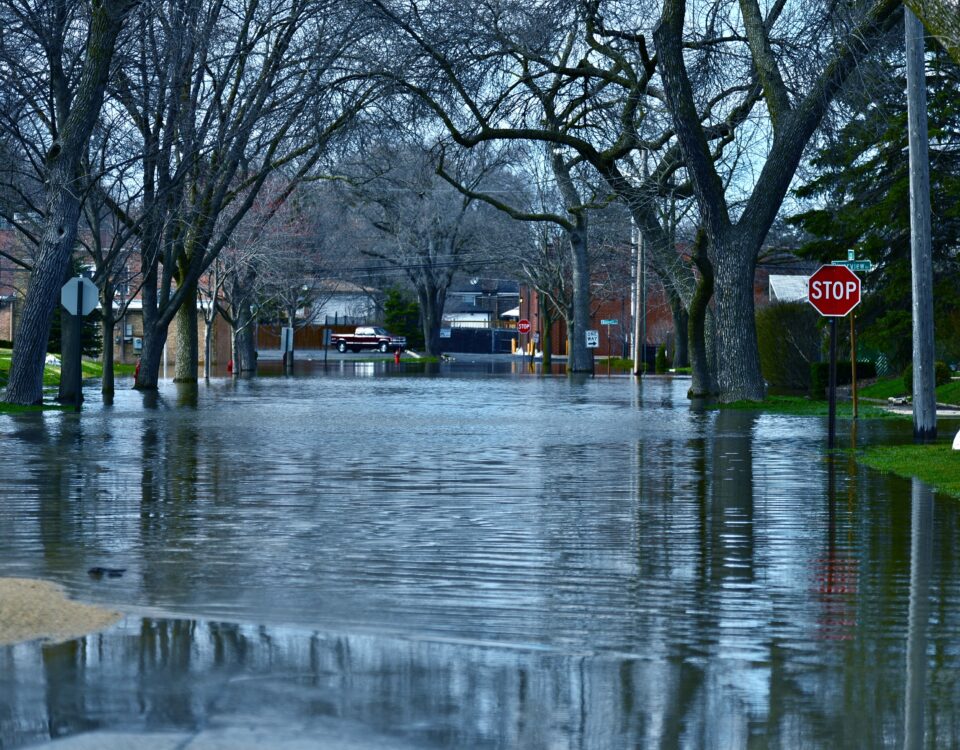
Who Will Tell You about Your Property’s Flood Risk?”
October 12, 2022
Help Americans Find the Flood Insurance Coverage They Need – Online
October 12, 2022When we hear about flooding in the news, we mostly hear about spring floods and summer storms, which can make it seem like flooding only happens during half of the year. That’s not quite true. We may be reaching the end of the historic 2020 hurricane season, but we’re not quite out of the woods.
That’s because flood risk doesn’t dry up in the winter, and solid water isn’t the only thing to worry about when it gets cold. From the Pacific Northwest to the Great Lakes to the Northeast, the threat of serious flooding persists through the cold months in the form of snowmelt, ice jams, and winter storms.
Here’s what you need to know about winter-related flood risks and what you can do to protect your property.
Winter Flood Risk #1: Snowmelt
Snowmelt is a natural part of the water cycle. But when snow thaws too rapidly to be absorbed back into soil, surrounding water bodies, and drainage systems, it can flood nearby land, which means the water could end up in your basement.
Snowmelt floods can happen anywhere across the snowy north of the United States and typically occur in small, localized events. But that doesn’t mean these events can’t result in significant damage. Say it snows ten inches, which isn’t uncommon in cold climates. Ten inches of snow is roughly one inch of water, and according to FEMA, just an inch of floodwater can cost you as much as $25k in repairs.
While snowmelt risk is higher in the spring, climate change has introduced more and more unseasonably warm temperatures every winter. Take the 2019 Midwestern floods, for example. Record amounts of snowfall from January through March were followed by a three-day stretch of 60-degree weather. Rain fell and caused historic levels of flooding along the Missouri River and its tributaries.
Worried about snow melt this winter? Talk to your insurance agent about your flood risk and get a quote today.
Winter Flood Risk #2: Ice Jams
Ice jam floods happen when long cold spells, which cause the surface of rivers to freeze, are followed by periods of warm weather. As temperatures warm, large chunks of ice break off unevenly, block waterways, and send water into nearby communities.
Like snowmelt, ice jams usually happen during the spring thaw. Ice jam floods are most common in icy Alaska, but they’ve been reported across the country. A thaw following a deep freeze in winter 2019 created ice backup across the north, jamming and overflowing rivers from upstate New York to Michigan to Minnesota.
Live in an area prone to ice jams? Talk to your insurance agent about flood insurance today.
Winter Flood Risk #3: Winter Storms
People who live in lakeside places like the Windy City are probably familiar with flooding in the winter. Strong winds from winter storms can create massive waves that crash over shorelines and barriers into city streets, as they did in Chicago last winter.
These winter storms and subsequent floods are common in the Midwest along the Great Lakes, but they also happen along the East Coast. Nor’easters can trigger storm surges that push heavy ocean tides into coastal communities, on top of heavy rain or snow.
Regular downpours and flash floods can happen throughout the winter, too, as long as temperatures are high enough.
Steps You Can Take to Keep Your Property Safe from Flooding This Winter
The best way to keep your property safe from a flood is to make sure you have safeguards in place before it happens. The two main steps to take are to ensure you have both financial protection against potential damages and structural flood mitigation on your property.
Step 1: Secure Flood Insurance
Purchase a flood insurance policy well before the threat of flooding is imminent. That way, you’ll be able to easily and quickly file a claim should you face any flood damage this winter.
The good news is that a flood insurance policy covers all types of flood damage the same, which means your policy will offer protection all year round. The amount you pay for coverage is determined by things like when your building was constructed, the type of foundation you have, and your flood zone and risk level.
Step 2: Shovel Proactively and Test Drainage Systems
There are also several precautions you can take each winter to prevent property-level snow melt flooding:
- Shovel snow at least five feet away from your foundation.
- If your property is on a grade or hill, shovel snow so that it’s not on a runoff path.
- Clear snow from your roof.
- Keep drainage systems like gutters and groundwater pumps around your property free of snow and ice buildup.
- Test sump pumps with a bucket of water.
The same wet and dry floodproofing steps you take to protect your property from spring and summer floods, like installing drainage systems, can help with floods caused by snowmelt, ice jams, or winter storms.
See articles of Flood Restoration
Help Americans Find the Flood
Insurance Coverage They Need – Online




